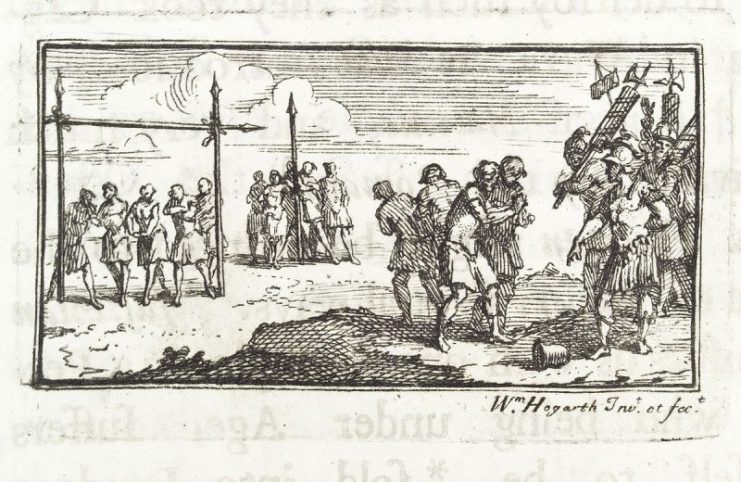There are numerous tales of cruel and unusual punishments in ancient Rome. One of the tales in Livy’s History tells of how Tarpeia was punished for allowing enemy Sabines into the city. Her punishment was to be crushed and tossed from a rock above the Roman forum.
Whether Tarpeia ever truly existed is a debate amongst historians. What is not disputed is that the tale was a warning for future generations, and the practice of throwing traitors from the “Tarpeian Rock” became common practice in Rome.
But not every terrible punishment we read about in the history of Rome was actually carried out, and some changed in form quite a bit over time.

The Roman society was based on hierarchy and patriarchy. The oldest male in any family technically had the authority to kill anyone in his family – anyone under his roof and extended family as well. But this power may have been primarily symbolic and not meant total freedom for the head of the family to do whatever he liked. As an example, the Roman senator Quintus Fabius Maximus Eburnus killed his son for his “dubious chastity.” This was seen as an abuse of his power, and Quintus was tried and exiled.
The only justification for using this power was for crimes against the state. Aulus Fulvius was killed by his father because he was involved in the Catiline conspiracy. His father was not tried in this case because his son was involved in treason, as Catiline and his followers attempted to assassinate Cicero.

Another punishment that is frequently mentioned in a discussion of cruel and unusual punishments in Rome is the “punishment of the sack.” Someone convicted of murdering their relative would be sewn into a leather sack with a snake, a monkey, a rooster, and a dog. Then the sack would be thrown into a river.
But this punishment is rarely mentioned in Roman histories. Livy’s History from the Foundation of the City states that a man who killed his mother was sewn into a sack and thrown into the sea. But there is no mention of any animals being placed into the sack with him.

Modestinus wrote, in the middle of the third century AD, that the punishment for parricide was being beaten with a rod stained with the culprit’s own blood and then sewn into a sack with the aforementioned animals and thrown into the sea. If the sea was not easily accessible, then the accused would be thrown to the wild animals instead.
It is believed by historians that the punishment with all of the animals was added later in the empire’s history as a warning to avoid parricide. The purpose was not for the punishment to be enforced but for the prospect of it to scare the public enough to keep them from committing the crime in the first place.

The sixth king of Rome, Servius Tullius, is said to have decreed that anyone who did not take part in the census would forfeit their property and be sold into slavery. This is the account in the records of Dionysius of Halicarnassus. But his contemporary, Livy, records that anyone who did not register for the census faced death or imprisonment.

Either way, there is no record of either punishment actually being carried out. It is possible that no one failed to register for the census in order to guarantee their rights as Roman citizens. There is an account from Cicero that a man refused to present himself for the census in order to take advantage of a loophole in the inheritance law. The man was only punished by losing his right to vote.

It seems that the concepts of cruel and unusual punishments were mainly something conceived by later generations of Romans about their ancestors and not factual occurrences at any time in Roman history. Even the records we have of these “punishments” seem to be inconsistent with records of what actually occurred in Rome.
